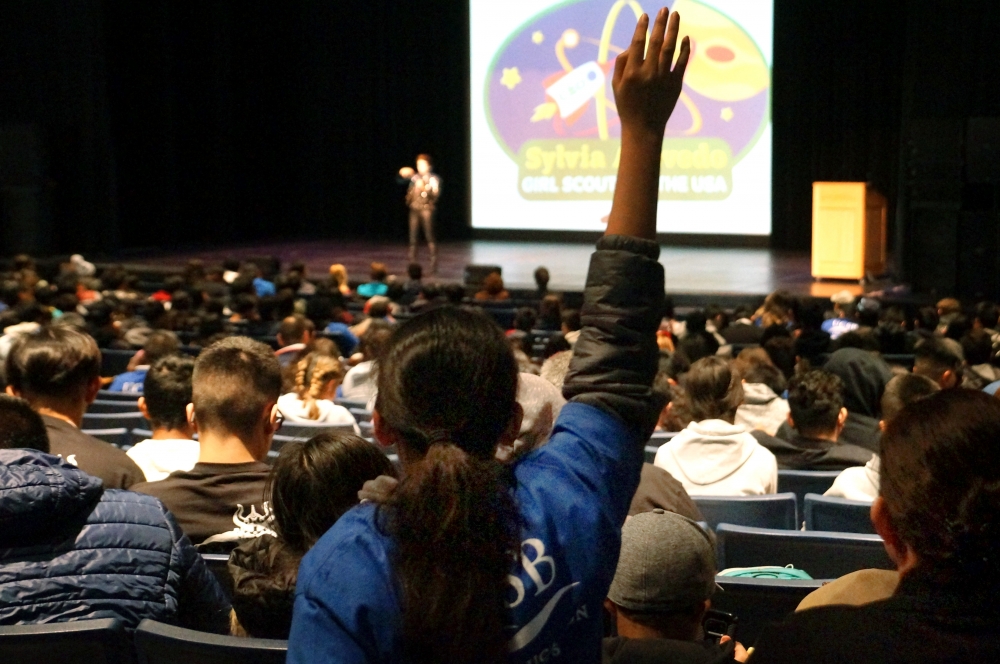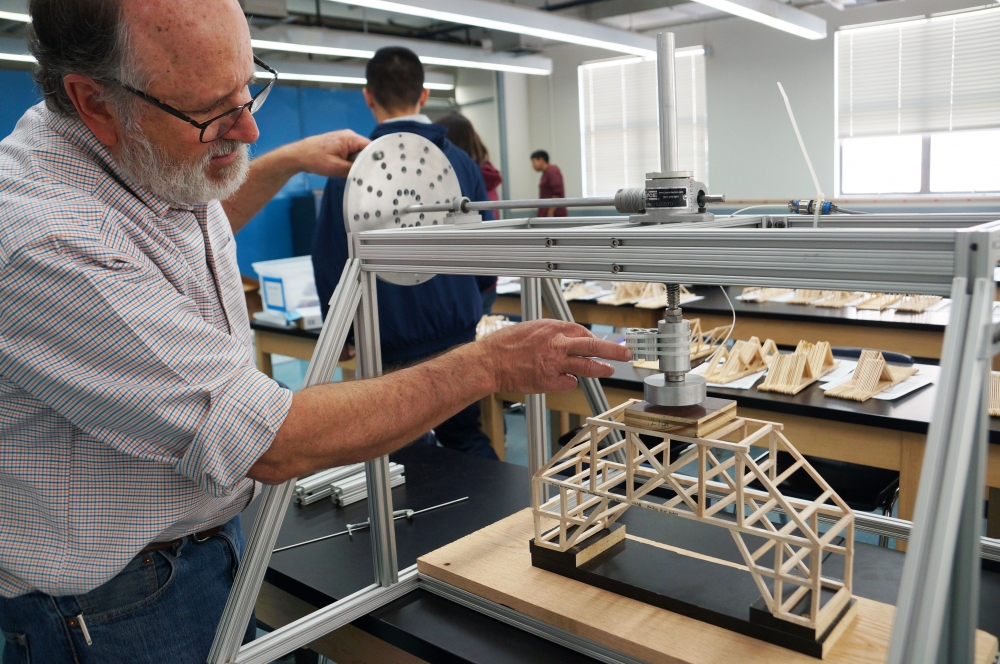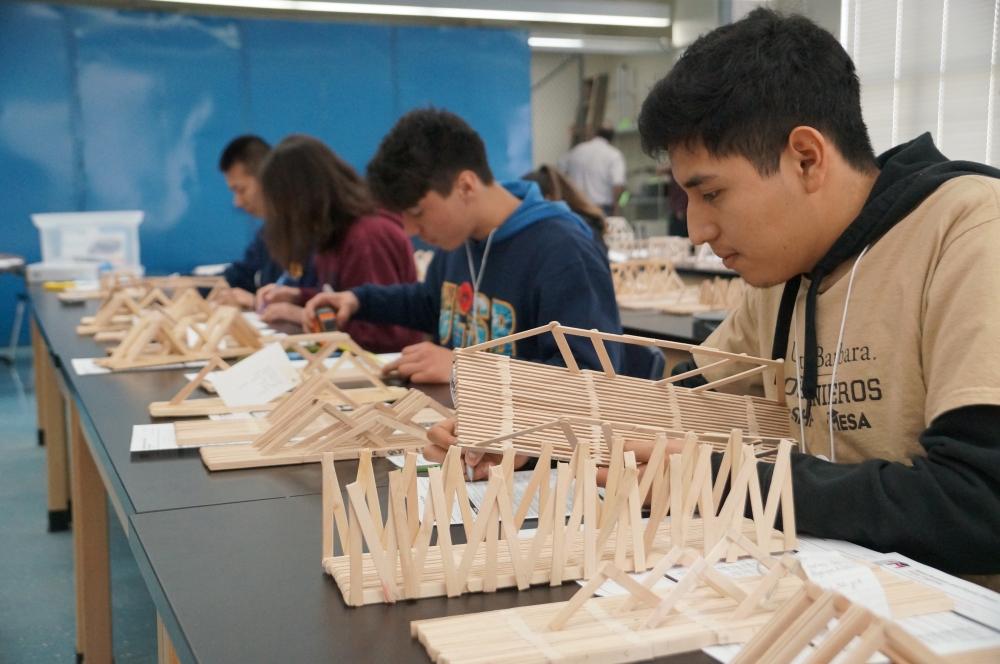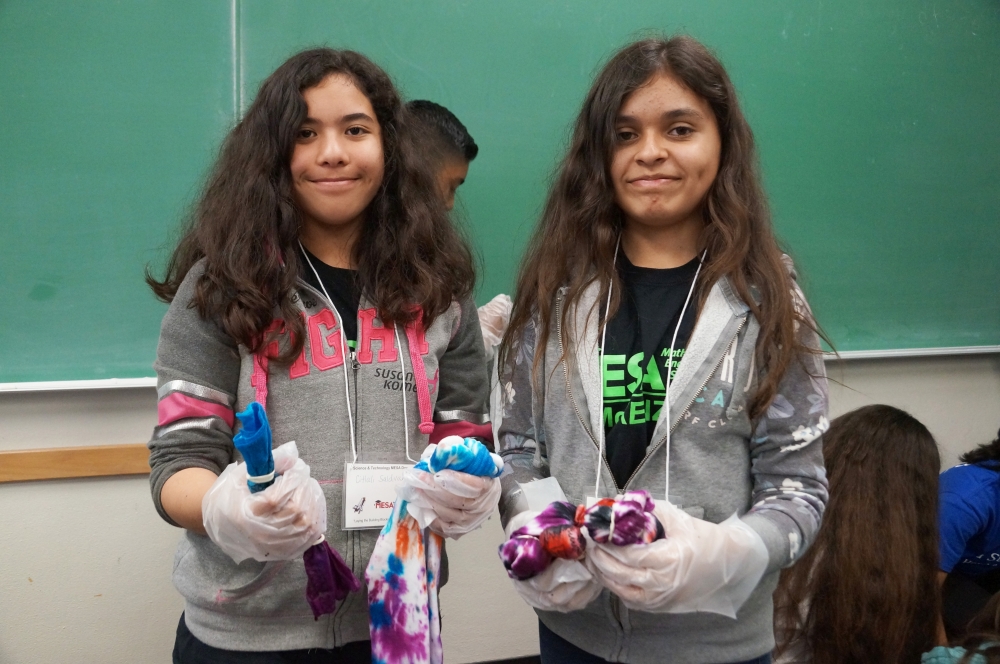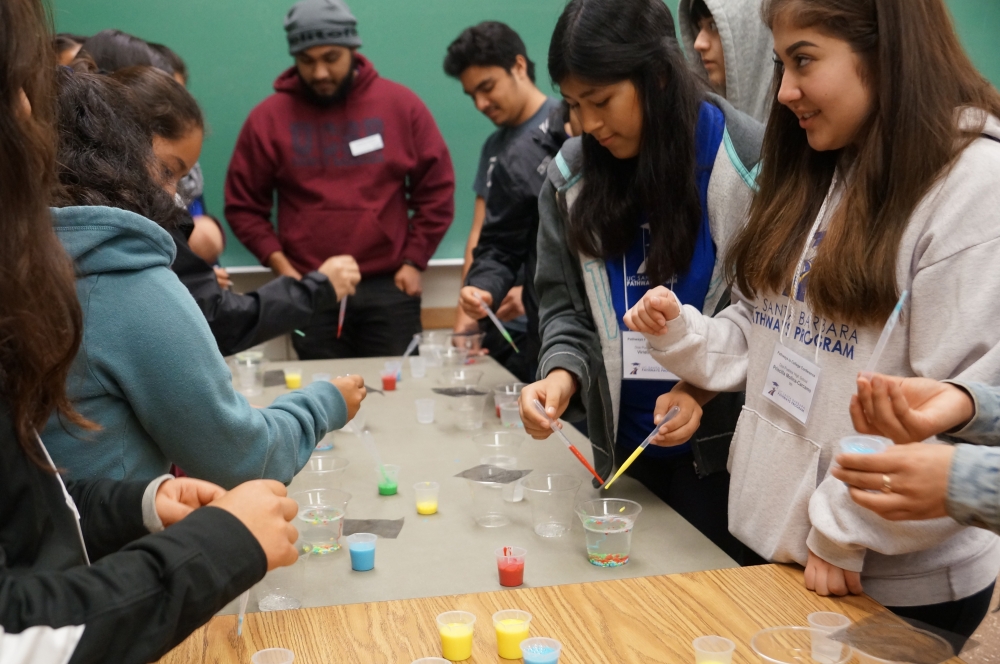Eyes on the Prize
Sylvia Acevedo spent a large part of her childhood living on a dirt road in Las Cruces, NM, and grew up at a time when women — let alone Hispanic women — in the United States weren’t expected to shine in the male-dominated world of science and engineering.
“Don’t listen to anyone who tells you that you can’t accomplish something, that you can’t do something,” said Acevedo. A rocket scientist and chief executive officer of Girl Scouts USA, she spoke to the crowd of students and parents who filled UC Santa Barbara’s Campbell Hall Saturday, March 3 to kick off the annual MESA Day event. In her talk Acevedo outlined the challenges she faced in her own life, and encouraged the attendees to “shoot for the stars” — just as she had in pursuing an engineering degree, despite societal expectations. Her persistence eventually led her to develop programs for Voyager 2 and its famous Jupiter flyby in 1989.
“Do not let go of your dreams, do not lose sight of them,” Acevedo said. “Keep your eye on them, and pull yourself to them.”
Such was the tone set for MESA Day as the participants — middle- to high school students from Santa Maria to Oxnard — explored their options, the UCSB campus and the possibility that the path to their dreams involves the pursuit of science, technology, engineering and mathematics (STEM)-related higher education.
“We are trying to inspire students to go into the science fields, and the hope is for them to go to college and succeed,” said Micaela Morgan, K-12 programs director in the UCSB Office of Education Partnerships. The kids would typically be the first in their families to attend college, often come from low-income homes and are generally from underrepresented populations.
Competitions and workshops throughout the day and across campus highlighted different STEM fields. Those with an affinity for chemistry, for example, made their own slime, while the more machine-oriented built a motor or a prosthetic arm.
Future marine scientists got up close and personal with sea creatures at the UCSB Marine Science Institute’s REEF facility. In a culturally relevant twist, Gerardo Aldana — UCSB Chicano Studies professor and department chair by day, engineer in his other life — introduced students to Tamuyal, a Mesoamerica-meets-Pokémon Go mobile app that encourages awareness of local ecology. Meanwhile, future structural engineers exercised their creativity and technical know-how with a competition to build the best bridge from popsicle sticks and balsa wood.
Student members of professional science and engineering groups, such as Los Ingenieros, oSTEM (Out in Science, Technology, Engineering and Mathematics), SACNAS (Society for the Advancement of Chicanas/os and Native Americans in Science) and the National Society of Black Engineers took time out of their Saturday to assist with or lead many of the sessions. Parents also got some support with a workshop aimed at helping them navigate the college applications process.
The winners of the competitions will go on to participate in a regional MESA competition in the near future, but in reality all participants walked away with something.
“It’s two-fold,” Morgan said. “They get to be scientists for a day, and they also get some college readiness and see what college is like.”
